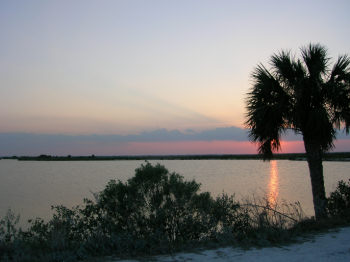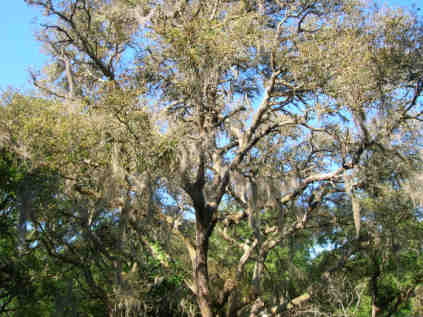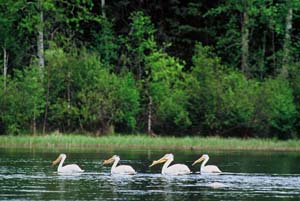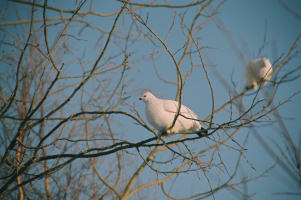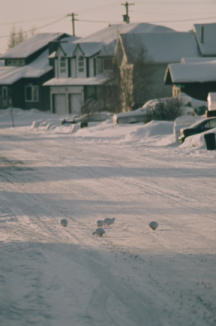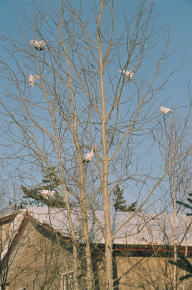I am in Florida. Yes, we've seen the alligators, palm trees, vultures, and spoonbills. But every morning when we walk through the shady Spanish-moss draped live oaks, we hear the tell-tale chatter and occasional song of Ruby-crowned Kinglets. Amidst the bursts of the resident Carolina Wrens rollicking "teakettle-teakettle-teakettle" song, we hear the lazy sweet songs of Blue-headed Vireos and the "chuck" of Yellow-rumped Warblers skittering north from tree-top to tree-top. And this morning, minutes after coming across a big thick-shelled gopher tortoise, I looked up to see a hundred White Pelicans soaring together on the rising thermals.
Florida is full of Boreal birds. The Ruby-crowned Kinglets, Blue-headed Vireos, Yellow-rumped Warblers, and even White Pelicans, are all birds that have significant breeding populations within the Boreal. Winter and spring in Florida wouldn�t be the same without them but it is the Boreal that we have to thank for their abundance here.
American White Pelicans--Churchill River, Manitoba. Photo by Garth Lenz.
A few days ago I watched a Palm Warbler flit across a narrow freshwater pool right over the head of a floating alligator. I had to shake my head in amazement as I thought about how this little bird would be singing from a sphagnum bog somewhere in the heart of the Boreal by June. It would raise two broods of young in that short northern summer before starting south again and ending up back here in Florida for the winter.
Jason, my friend from Yellowknife in the Northwest Territories just emailed me to tell me about the migrant birds wintering in his neighborhood where the temperature is just starting to warm-up to the freezing mark. The birds that have traveled south to winter in his area are ptarmigan. Here's a couple of his recent photos of them.
